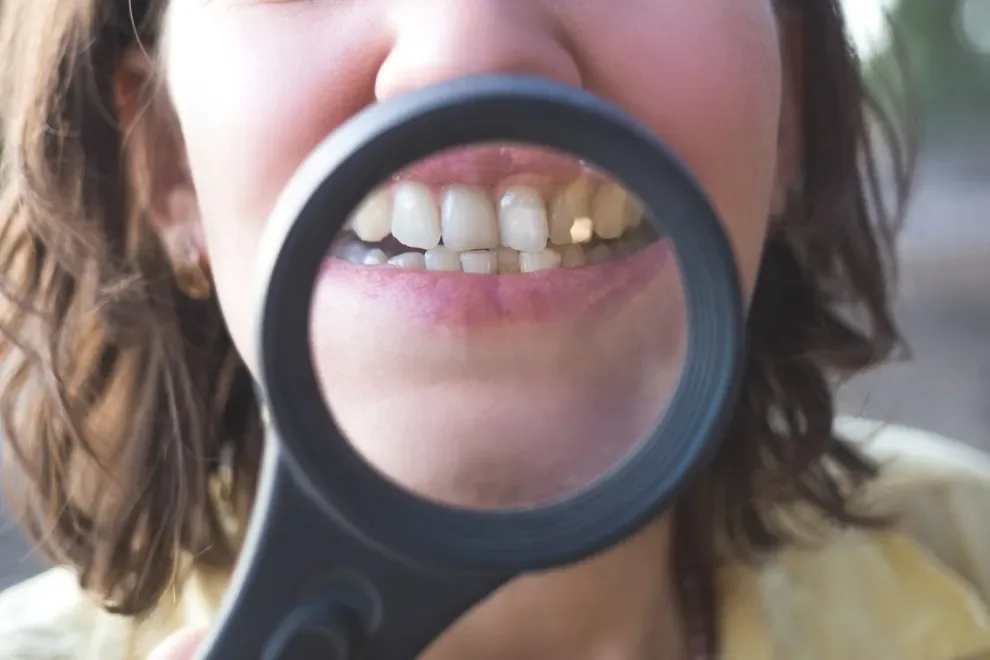How to Tell if You Have an Under or Overbite

Table of Contents
- Malocclusion
- Overbite vs. Underbite
- Overbite & Underbite Differences
- Overbite Signs
- Underbite Signs
- Overbite Treatment
- Underbite Treatment
If you suspect your teeth are misaligned, you may be unsure whether you have an underbite or overbite. Looking at your mouth from a front or side angle may help, especially if the bite issue is significant.
If your top front teeth extend beyond your lower front teeth, you may have an overbite. It’s important to note, however, that even with a properly aligned bite, the upper front teeth do overlap the lower front teeth slightly. An overbite is present when the upper front teeth extend too far past the lower front teeth.
If your lower front teeth sit in front of your upper front teeth, you have an underbite.
Malocclusion
The misalignment of teeth, also called malocclusion, is a common oral health problem affecting approximately 58 percent of the population.1
Malocclusion comes in many forms, including overbite and underbite.
Many people may be living with an untreated malocclusion without even knowing it. Bite problems may have been ignored in childhood, or teeth may have shifted after orthodontic treatment or the loss of a tooth. Sometimes, a minor misalignment issue in childhood can become more serious or noticeable after teeth shift with age.
Overbite vs. Underbite
While both overbite and underbite are forms of teeth misalignment, they are clinically categorized as different classes of malocclusion.
These classifications are from Angle’s Classifications of Occlusion, which is a system of malocclusion classification created in the early 1900s by Edward H. Angle. They are still used in orthodontic treatment planning today.
An overbite is considered a Class 2 malocclusion. It’s also called retrognathism. It is present when the upper teeth and jaw extend too far over the lower teeth and jaw.
An underbite is considered a Class 3 malocclusion. It’s also called prognathism. With an underbite, the lower teeth extend in front of the upper teeth.
Difference Between Overbite & Underbite
Underbites and overbites are both examples of “bad bites” or teeth misalignment problems that require orthodontic treatment, but there are many differences between them. Here are some of them:
Overbites are very common, while underbites are more rare, affecting only 5 to 10 percent of the population.2
Overbites affect the upper jawbone (maxilla), while underbites affect the lower jawbone (mandible).
While mild overbites are common and some may need only minimal treatment (or none), most underbites will require orthodontic treatment to prevent problems with oral health, speaking, and eating.
Overbites and Class 2 malocclusions are also related to overjet (sometimes called “buck teeth”), where the upper teeth protrude forward and out over the lower teeth, and deep bite, where the upper front teeth overlap the lower teeth when the back teeth are closed.
How To Tell If You Have Overbite
The easiest and most thorough way to diagnose a malocclusion is to visit a dentist or orthodontist.
If you want to tell if you have an overbite at home, before your dentist appointment, you can follow these steps:
In front of a mirror, close your mouth without clenching your jaw or pushing your teeth together.
Looking in the mirror, smile a relaxed smile, keeping your lips out of the way as much as possible to get the best look at your teeth.
Look at your smile from the front and the side. If your upper teeth seem to come too forward or overlap too much over the lower teeth, you may have an overbite.
How To Tell If You Have Underbite
Underbites may be more visible and noticeable than overbites. To determine if you have an underbite, follow the steps above. If your lower teeth sit in front of your upper teeth when you smile naturally, you likely have an underbite.
Overbite Treatment
If you have an overbite, your treatment options will vary depending on the severity and complexity of your issue.
Treatment options may include the following:
Tooth extraction: If there is crowding in your back teeth, a tooth (or multiple teeth) may need to be removed in order to provide space for teeth to shift to a new and corrected position.
Tooth replacement: If the overbite is due to teeth shifting after the loss of a tooth, the missing tooth will have to be replaced to ensure the corrected smile stays in place.
Jaw surgery: In cases of extreme or skeletal overbite, jaw surgery may be needed in addition to orthodontic treatment.
Braces: Braces have long been a popular method to treat malocclusion, including overbite. Braces consist of small brackets that are cemented to the teeth and connected by wires that go across the teeth (archwires). These wires are tightened during regular orthodontic visits in order to apply pressure to move the teeth.
Clear aligners: For those with a mild or moderate overbite, clear aligners are a fast and convenient treatment option. Aligners are removable and customized trays that fit over the teeth and apply gentle continuous pressure.For treatment, a series of trays are designed to progressively move teeth into their optimal position. The average treatment time for at-home aligners is around four to six months.
Orthodontic devices: Palate expanders (which are fixed to the roof of the mouth and then expanded to widen the jaw) and other accessories may be used to influence jaw movement. These devices are more commonly used in the treatment of children and adolescents, whose jaws are still developing.
Underbite Treatment
The orthodontic treatment options for underbite include those listed above for overbite: braces and aligners. For mild-to-moderate cases of underbite (Class 3 malocclusion), clear teeth aligners may be used. For more severe cases, traditional braces and extended treatment times may be required.
In more serious cases of underbite that are related to jaw placement, a combination of surgery and alignment treatment (braces or aligners) may be the most effective treatment plan.3 Jaw surgery may require moving the jaw and/or lengthening or shortening the jawbone.
Underbite vs. Overbite Frequently Asked Questions
Overbites are more common than underbites and may be less noticeable. But there is no “better” when it comes to malocclusion. Every bite is unique, and there’s no need to feel bad or embarrassed about an orthodontic issue or compare your smile to someone else’s smile. What’s important is getting a proper diagnosis and taking steps to correct the issue before it gets worse or results in complications (like tooth decay or gum problems).
Yes, overbites are much more common than underbites. Overbites are the most common alignment and bite issue, while underbites only affect 5 to 10 percent of the population.
Yes, there is treatment available for even the most serious cases of overbite. Mild overbites may be easily corrected with clear aligners in as little as four months. Extreme overbites may require jaw surgery and braces treatment.
Whether you choose aligners or braces to correct your overbite, you’ll have to wear a retainer after treatment to ensure your teeth don’t shift back to their old positions. While orthodontic care does "fix” overbites and other forms of malocclusion, there will also be some long-term maintenance needed.
If left untreated, an underbite can result in oral health problems, such as tooth decay, gum disease, and weakened enamel.
Tooth crowding can create problematic hard-to-clean areas in the mouth that can accumulate harmful bacteria that can eat away at teeth and irritate gums. Friction between teeth can wear on the enamel. An underbite (or other type of malocclusion) can also cause problems with eating and speech.
To avoid complications from an underbite, it’s important to treat the issue as soon as possible, generally with braces or clear aligners.
